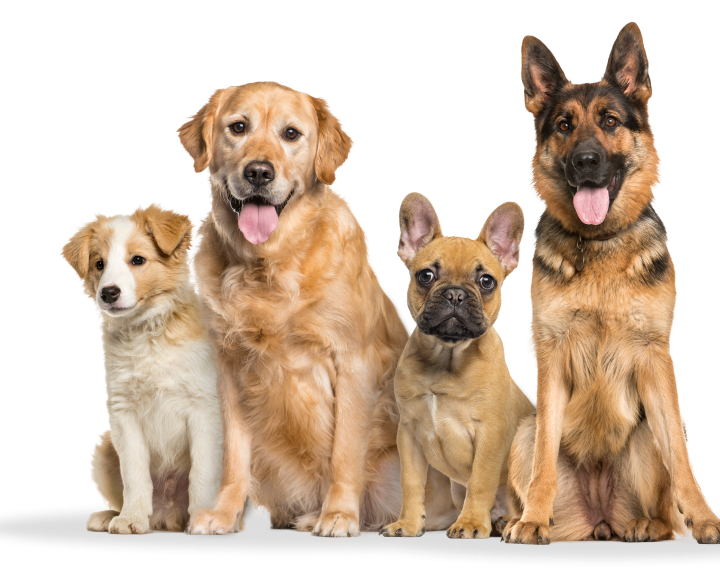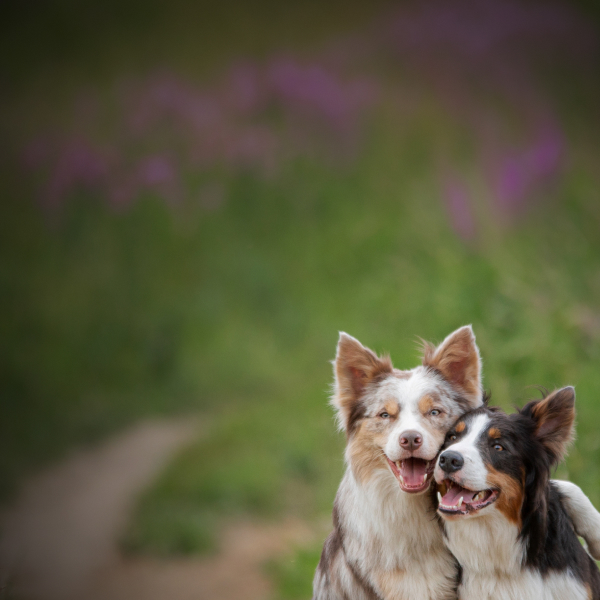- Home
- Dog Treatments
- Tibial Tuberosity Transposition in Dogs
Tibial Tuberosity Transposition in Dogs
What is Tibial Tuberosity Transposition?
Tibial tuberosity transposition is a corrective surgery to secure the patellar tendon into the trochlear groove. Many dogs develop an issue where this tendon and the small kneecap-like bone attached to it become displaced, or dislocated. The issue ranges in severity, with some dogs only experiencing episodes of patellar displacement and others having the tendon and knee cap out of place at all times. Dogs with this issue often present as bow-legged, with up to 50% of dogs with this ailment being affected in two legs at once.
This is a very common problem in dogs that can be diagnosed as early as a few weeks into the dog's life. Non-invasive techniques are often attempted first to see if the kneecap will resume its place in the femoral groove with rest and anti-inflammatory drugs. If this fails, or the problem becomes chronic, surgical intervention is required. A tibial tuberosity transposition uses metal implants to transplant a bone fragment to secure the tendons and ligaments in place. It should only be performed by an ACVS board-certified veterinary surgeon.
Tibial Tuberosity Transposition Procedure in Dogs
Dislocation may be identified during a physical examination. X-rays will be taken to assess the severity of the issue. Blood work will have to be run to determine if the dog is healthy enough to undergo general anesthesia. If surgery is deemed appropriate, the dog will need to fast for several hours prior to the operation. A sedative will be given to the animal, and the affected limb will be clipped and cleaned. An IV will be administered and general anesthesia will be administered.
The dog should be placed on its back with its legs apart. The leg can then be incised laterally. The joint capsule, once visible, will be opened. Then, the connective band holding the tendon groups can be released to allow the kneecap to go back into the femoral groove. The tibial tuberosity (elevated portion of the tibia) will then be cut using an osteotome. It will be placed towards the center of the body. Wire is then used to secure this fragment in place and either a lag screw or two pins will be added for extra stabilization. It is important that the wire not be too tight so as not to dislocate the knee cap the other way. The joint capsule can then be shut and the incision sutured closed.
Efficacy of Tibial Tuberosity Transposition in Dogs
This surgical procedure has been found to have a decent success rate in most dogs. Good reports have been made following the recovery of both small and large breeds of dog, although more small dogs are affected by this ailment. The prognosis after surgery is often good in mild to medium cases of patellar luxation. Up to 90% of dogs resume some functionality in the limb that has been operated on.
For dogs with extreme cases, the effectiveness of this surgery may not be so pronounced. If the operation must be done in a very young dog, this indicates that the condition is very severe and prognosis may be guarded. One of every two dogs receiving this surgery will go on to experience another luxation. Many procedures exist to treat this problem, but if a tibial tuberosity transposition is not performed along with these techniques, the operation is likely to fail.
Tibial Tuberosity Transposition Recovery in Dogs
The dog should be closely monitored during the hours that follow the surgery. All vital functions will be watched to ensure that they resume with no issues. The surgical wound will be bandaged and the dog will be given pain medication. A prescription for non-steroidal anti-inflammatory drugs and a course of antibiotics will also be administered to the dog. An Elizabethan collar can be used if the dog begins to bite or lick at its incision.
All exercise should be decreased during the healing period, although physiotherapy can be started immediately. A follow-up appointment will be needed two weeks post-surgery for suture removal. By six weeks, the dog should be fully recovered. X-rays will be taken at this time to assess how well the leg has healed.
Cost of Tibial Tuberosity Transposition in Dogs
The cost of surgery to repair a patellar luxation can range from $1,000 to $3,000. This is because blood work, x-rays, medication and general anesthesia are all needed in addition to the actual procedure. Using a specialist as opposed to a standard veterinary surgeon will also increase costs. If physiotherapy is used, it may cost up to $75 per treatment. The dog will likely require non-steroidal anti-inflammatory drugs on and off once recovered from surgery to manage the affected limb.

Worried about the cost of treating your pet's symptoms?
Pet Insurance covers the cost of many common pet health conditions. Prepare for the unexpected by getting a quote from top pet insurance providers.

Dog Tibial Tuberosity Transposition Considerations
Various complications may arise during the treatment of a luxation. If the bone fragment is not secured correctly, it can break after the dog begins to be active again. It is also not uncommon for an infection to develop in the surgical area. A seroma (pooling liquid) may form where the fragment has been placed. The dog may also suffer from periods of lameness after it has recovered from the operation. The metal pins used in the procedure may irritate the dog, causing the need for a second surgery to remove them. All of the surgical treatments for a patellar luxation vary in their long-term success. Surgery does not prevent the development of degenerative joint disease. In medium and mild cases, rest and medication may be attempted in lieu of surgery. Unless the dog is experiencing significant pain, surgery may not be necessary.
Tibial Tuberosity Transposition Prevention in Dogs
As patellar luxation is generally a congenital defect, dogs presenting with this problem should not be bred, so that the affected genes do not pass on. When obtaining a dog, request for the full family health history to help identify potential health problems that may arise during your dog's life. Traumatic luxation may be prevented by reduce the chance of a major injury. Preventions may include keeping your dog leashed while on walks and discouraging rough play or fighting.
Tibial Tuberosity Transposition Questions and Advice from Veterinary Professionals
American Staffordshire Terrier
Virgil
3 Years
1 found this helpful
1 found this helpful
My pet has the following symptoms:
Stiffness
Lame
My dog has been diagnosed with grade 3 bilateral laxating patella. The vet who diagnosed him recommended block recession, lateral imbrication, and tibial tuberosity transposition. I sent the x-rays to the surgeon I usually use for my pets' surgeries, and she suggested we just do block recession and lateral imbrication. It sounds like the surgery is much more expensive and has greater risk of complications if we start moving and pinning bons. But, it also sounds like there might be a greater risk of the operation failing if we skip the tibial tuberosity transposition--is that accurate? Is the risk present just during the recovery period, or is this something that could cause the knee to fail later in my dog's life if we skip it now? Since he's a young and very active dog, we need both knees working well and don't want him to need surgery again later in his life if we can prevent it.
March 14, 2018
1 Recommendations
The problem with these cases is that they are all assessed on a case by case basis, given Virgil’s size (thinking about the breed) and likely activity I would be looking at doing more rather than less when it comes to surgical correction. If you are torn between the two opinions, I would recommend you get a third opinion by sending the x-rays and case notes to PetRays for a board certified Orthopaedic Specialist to take a look. Regards Dr Callum Turner DVM
www.petrays.com
March 14, 2018
Was this question and answer helpful?
beagle chihuahua
Taz
1 Year
1 found this helpful
1 found this helpful
My pet has the following symptoms:
Patellar Subluxation
My dog has patella sublaxation. He had one surgery to try to correct by suturing and tightening patella. It lasted about 2 months. It popped out and now is just out whereas before, the kneecap would pop back in sometimes. He is running around on 3 legs most of the time but sometimes puts it down. I have been told by ACVS orthopaedist that he now needs Tibial Tuberosity Transposition. Currently, he is happy and running and seems completely unaffected by his condition. He is 12 months old. Question is: what would happen if I just leave him the way he is? I hate to make him go through another surgery with the possibility of his having even more problems. Any and all advice is greatly appreciated.
Feb. 1, 2018
1 Recommendations
Without examining Taz I cannot give full input, but it is wise to have the surgery done to correct the issue as the issue will only become more problematic over time. Whilst Tax may be jumping around without a care in the world at the moment, that may all change within a few months or years; it is best to have this surgically repaired now than run the risk of issues later in life which in worst case scenario may result in amputation. Regards Dr Callum Turner DVM
Feb. 2, 2018
Was this question and answer helpful?
Pug
Peanut
4 Months
0 found this helpful
0 found this helpful
My pet has the following symptoms:
Limping
Lame
Shifting Weight To Other Leg
My 4 month old pug Peanut was diagnosed with a grade 3 Luxating Patellar at 3.5months old - surgeons aren't sure whether to operate or leave it as both options could cause further damage and risk Peanut's health (i.e Breathing if operated on too much) - If he has gone from 0-3 in 4 months of his life (i noticed at 3.5months old and it has got worse) what will he be like in 5-8months once fully grown? I am scared as I don't know what is best for my Peanut as both options could cause further damage :( - I was told "the complexity of surgery when the patient has reached maturity is hard to predict - it may be a simple TTT or it may require distal femoral osteotomy & TTT - it's hard to predict" and I am torn .... Please can someone help
Boston Terrier
Salty
1 Year
0 found this helpful
0 found this helpful
My pet has the following symptoms:
Holding Leg Up, Luxating Patella
My 1 year old Boston Terrier had the lateral suture procedure done for his Grade 4 luxating patella 3 months ago. We opted for the suture procedure because he was constantly holding his leg up and xrays showed his growth plates were still quite open. He is still holding his leg up frequently, but he does not appear to be in any pain and it doesn't slow him down in the least. We went for our 12 wk check up and the vet now wants to do the TPLO surgery on the same leg because he can feel the patella moving out of the joint and going back in. We did another xray and it appears the growth plates are 95% closed. Is this surgery something I should jump right into or should I wait and see how things progress. What are the complications if I don't do the surgery? I hate to put him through yet another surgery on the same leg if not needed. Not to mention the crate rest experience was brutal!


